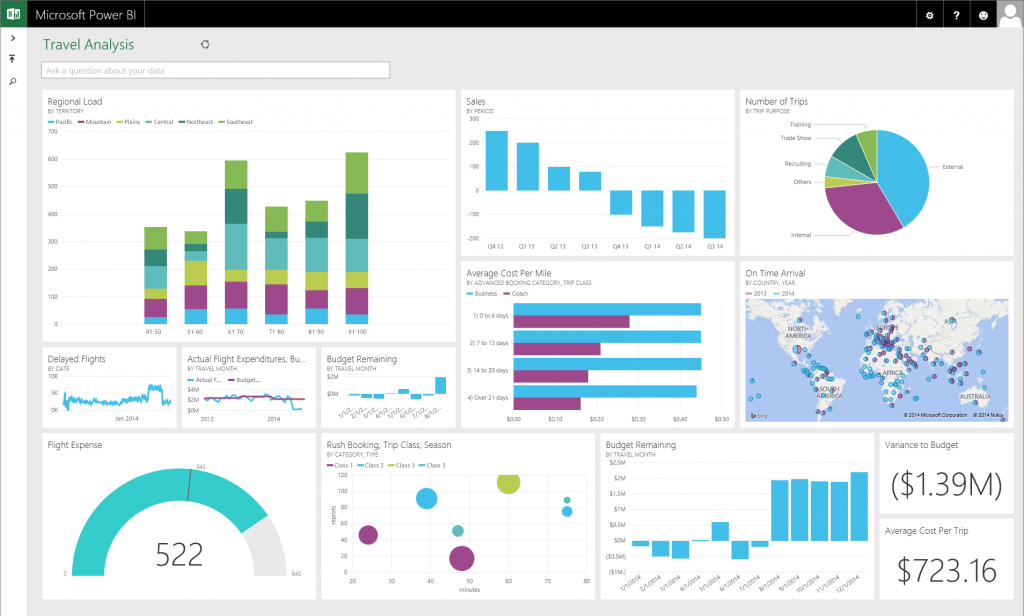How to Sell Your Accident Car
So, you’ve had an accident and your car is totaled. Or maybe it’s just not worth repairing. Whatever the reason, you need to sell your accident car. But how do you get the best possible price for it?
This guide will provide you with everything you need to know to sell your accident car and get the best possible price. We’ll cover everything from preparing your car for sale to negotiating with potential buyers.
Preparing Your Car for Sale
The first step in selling your accident car is to prepare it for sale. This means cleaning it up, making any necessary repairs, and getting it inspected.
Clean it up: A clean car is more appealing to potential buyers. So, wash and wax your car, and clean the interior. If the car has any damage, be sure to point it out to potential buyers.
Make any necessary repairs: If your car has any damage, you’ll need to repair it before you can sell it. This could include anything from fixing a broken bumper to replacing a shattered windshield.
Get it inspected: A potential buyer will want to know that your car is in good condition, so it’s a good idea to get it inspected by a mechanic. This will give you a report that you can show to potential buyers.
Finding a Buyer
Once your car is ready for sale, you need to find a buyer. There are a few different ways to do this:
Sell it to a dealership: Dealerships are always looking for used cars, so this is a good option if you want to sell your car quickly and easily. However, you may not get the best price for your car if you sell it to a dealership.
Sell it online: There are a number of websites that allow you to sell your car online. This is a good option if you want to reach a wider audience of potential buyers. However, you’ll need to be prepared to deal with scammers and lowball offers.
Sell it to a private party: Selling your car to a private party is a good way to get a fair price for it. However, it can be more time-consuming and difficult to find a private buyer.
Negotiating with Potential Buyers
Once you’ve found a potential buyer, you’ll need to negotiate a price. This can be a tricky process, but there are a few things you can do to increase your chances of getting a good price:
Be prepared to walk away: Don’t be afraid to walk away from a deal if you’re not happy with the price. There are plenty of other potential buyers out there.
Be confident: Believe in yourself and your car. If you’re confident in the value of your car, you’ll be more likely to get a good price for it.
Be prepared to compromise: You’re not likely to get exactly what you’re asking for, so be prepared to compromise on the price.
Sell My Accident Car: A Comprehensive Guide
Navigating the aftermath of a car accident can be overwhelming. In addition to dealing with the emotional toll and potential injuries, you’ll also need to figure out what to do with your damaged vehicle. If repairs are too costly or impractical, selling your accident car might be the best option. This guide will walk you through the steps involved in selling your accident car, ensuring you get a fair price and minimize the hassle.
Step 1: Assess the Damage
The first step is to determine the extent of the damage. Take photos of the damage from all angles and then gather any documentation you have, such as the police report and insurance adjuster’s estimate. This will help you understand the severity of the damage and get an idea of the repair costs. If the repairs are more than the car’s worth, it may not be financially viable to fix it.
Step 2: Research Your Options
Once you have a clear understanding of the damage, it’s time to research your options. You can sell your accident car to a private buyer, a used car dealer, or a salvage yard. Each option has its pros and cons. Private buyers may offer the highest price, but they can also be more demanding in terms of the condition of the car. Used car dealers typically offer less than private buyers, but they’re more convenient and handle all the paperwork. Salvage yards typically pay the least, but they’ll take cars in any condition and handle the disposal process.
Step 3: Prepare Your Car
Before you list your car for sale, take some time to prepare it. This includes cleaning the car inside and out, repairing any minor cosmetic damage, and gathering all the necessary paperwork, such as the title and registration. You may also want to consider getting a vehicle history report to show potential buyers that the car has a clean history before the accident.
Step 4: Set a Price
Determining the right price for your accident car can be tricky. You want to get a fair price, but you also don’t want to price yourself out of the market. Research similar cars for sale in your area to get an idea of what they’re going for. You can also use online car valuation tools to get an estimate. Once you have a price in mind, be prepared to negotiate with potential buyers.
Step 5: Market Your Car
Once you have your car ready to sell, it’s time to market it. You can list your car online on websites like Craigslist or Facebook Marketplace. You can also place ads in local newspapers or magazines. Be sure to include plenty of photos and a detailed description of the car’s condition. You can also use social media to spread the word about your car for sale.
Sell Your Accident Car: A Comprehensive Guide
If you’re struggling to decide what to do with your damaged car after an unfortunate accident, selling it might be the best way to turn a lemon into a little lemonade. But don’t just rush into the first offer you receive. There are several factors to consider if you want to get the most out of your sale. Here’s a step-by-step guide to help you navigate the process.
Step 1: Assess Your Car’s Condition
First off, you need to get a clear picture of your car’s condition. Is it still roadworthy, or has the accident rendered it more fit for the junkyard? If it’s still drivable, you can have it appraised by a mechanic to determine its fair market value. If not, then you’ll need to estimate the value of its salvageable parts.
Step 2: Decide Where to Sell
Now comes the big decision: where to sell your accident car. Each option has pros and cons, so it’s crucial to weigh them carefully based on your needs and the car’s condition.
- Private Buyer: Selling to a private individual can net you a higher price, but it also involves more legwork and potential headaches.
- Dealership: Dealerships offer a quick and easy way to sell your car, but they may not give you the best value.
- Salvage Yard: Salvage yards are a great option if your car is damaged beyond repair. They’ll pay you based on the value of its scrap metal.
- Online Marketplace: Online marketplaces like Craigslist and eBay can broaden your reach and potentially get you a better deal.
Step 3: Prepare Your Car for Sale
First impressions matter, even if your car is banged up. Give it a good cleaning and make any necessary repairs to improve its appearance. If it’s not running, be sure to have it towed to the potential buyer’s location.
- Gather Documentation: Make sure you have all the necessary paperwork, including the title, registration, and proof of ownership.
- Take Quality Photos: Take plenty of high-quality photos that clearly show the car’s condition, both inside and out.
- Disclose the Damage: Be honest and upfront about the car’s accident history and damage. Don’t try to hide anything, as it could hurt your credibility in the long run.
- Price It Right: Research similar cars in your area to determine a fair asking price. You can also consult with a mechanic to get a professional opinion.
Step 4: Market Your Car
Spread the word about your car for sale. Advertise it online, on social media, and in local publications. Be clear about the condition and price, and include plenty of detailed photos.
Step 5: Negotiate and Close the Deal
Once you start receiving offers, be prepared to negotiate. Be reasonable and don’t be afraid to walk away if you’re not getting a fair deal. When you’ve settled on a price, have the buyer sign a bill of sale and transfer the title.
Selling your accident car can be a hassle, but by following these steps, you can make the process as smooth and profitable as possible. Remember, patience and preparation are key.
Step 3: Spiff Up Your Ride
"First impressions matter," they say. And when it comes to selling your accident car, that couldn’t be truer. So before you snap a single photo or list your ride online, take some time to give it a little TLC.
Give it a good scrub
Nobody wants to buy a car that looks like a disaster zone. So get out the soap, water, and elbow grease and give your car a thorough cleaning. Wash it, wax it, and vacuum the interior until it sparkles like a new penny.
Gather your paperwork
You’ll need to have all the necessary documentation in order when you sell your car. This includes your title, registration, and proof of insurance. If you’ve had any accidents or repairs done on your car, be sure to have that documentation handy as well.
Capture its best angles
Take clear, high-quality photos of your car from all angles. Make sure to show off its features and any damage that potential buyers should be aware of. The better your photos are, the more likely you are to attract interested buyers.
Prep Your Car for Sale
Now that your car is clean and documented, it’s time to make it as appealing as possible to potential buyers. Here are a few things you can do:
Fix any minor repairs
If your car has any minor dents, scratches, or dings, it’s worth taking the time to fix them. This will make your car look more presentable and will help you get a better price.
Detail the interior
A clean and well-maintained interior will make your car more appealing to buyers. Vacuum the seats, wipe down the dashboard and console, and clean the windows.
Make it smell nice
Nobody wants to buy a car that smells like a gym locker. Use an air freshener or diffuser to give your car a pleasant scent.
Depersonalize it
Remove any personal belongings from your car, such as photos, CDs, and clutter. This will help buyers see themselves behind the wheel.
Set a fair price
Research similar cars in your area to get an idea of what your car is worth. You can also use online pricing tools to get an estimate. Once you’ve set a price, be prepared to negotiate with potential buyers.
Step 4: Advertise and Price Your Car
After you’ve done your research and prepared your car for sale, the next step is to advertise it and price it. A well-written ad and a competitive price will help you attract potential buyers and get your car sold quickly for the best possible price, don’t you agree?
When you’re writing your ad, be sure to include plenty of details about your car, such as the make and model, year, mileage, and condition. You should also include high-quality photos of your car so that potential buyers can see exactly what they’re getting into.
When it comes to pricing your car, it’s important to do your research and find out what similar cars are selling for in your area. You can use online resources like Kelley Blue Book or NADAguides to get an estimate of your car’s value. Once you have a good idea of what your car is worth, you can set a price that is competitive and will attract buyers.
Once you’ve created your ad and set a price, it’s time to start advertising your car. There are many different ways to advertise your car, such as online classifieds, social media, and local newspapers. You can also list your car with a local dealer or sell it to a salvage yard.
Step 5: Negotiate and Close the Sale
After finding potential buyers for your accident car, the next step is to negotiate the price and close the sale. Remember to remain firm but fair in your negotiations, considering the condition of your car and the market value.
Negotiation:
- Be prepared: Research the value of your car using online resources or consult with a mechanic. This gives you a strong foundation to negotiate from.
- Start high: Present a slightly higher price than your desired one, leaving room for compromise.
- Listen attentively: Understand the buyer’s perspective and be willing to make concessions within reason.
- Consider trade-offs: Offer incentives like free repairs or additional features to sweeten the deal.
Closing the Sale:
- Transfer the title: Legally transfer ownership of the car by signing and notarizing the title document.
- Complete paperwork: Ensure all necessary paperwork, such as a bill of sale and vehicle history report, is completed and signed.
- Exchange payment: Receive the agreed-upon payment in a secure and verifiable manner, such as a certified check or wire transfer.
- Finalize the deal: Once the payment is received and the paperwork is complete, hand over the keys and bid farewell to your accident car.




Leave a Reply